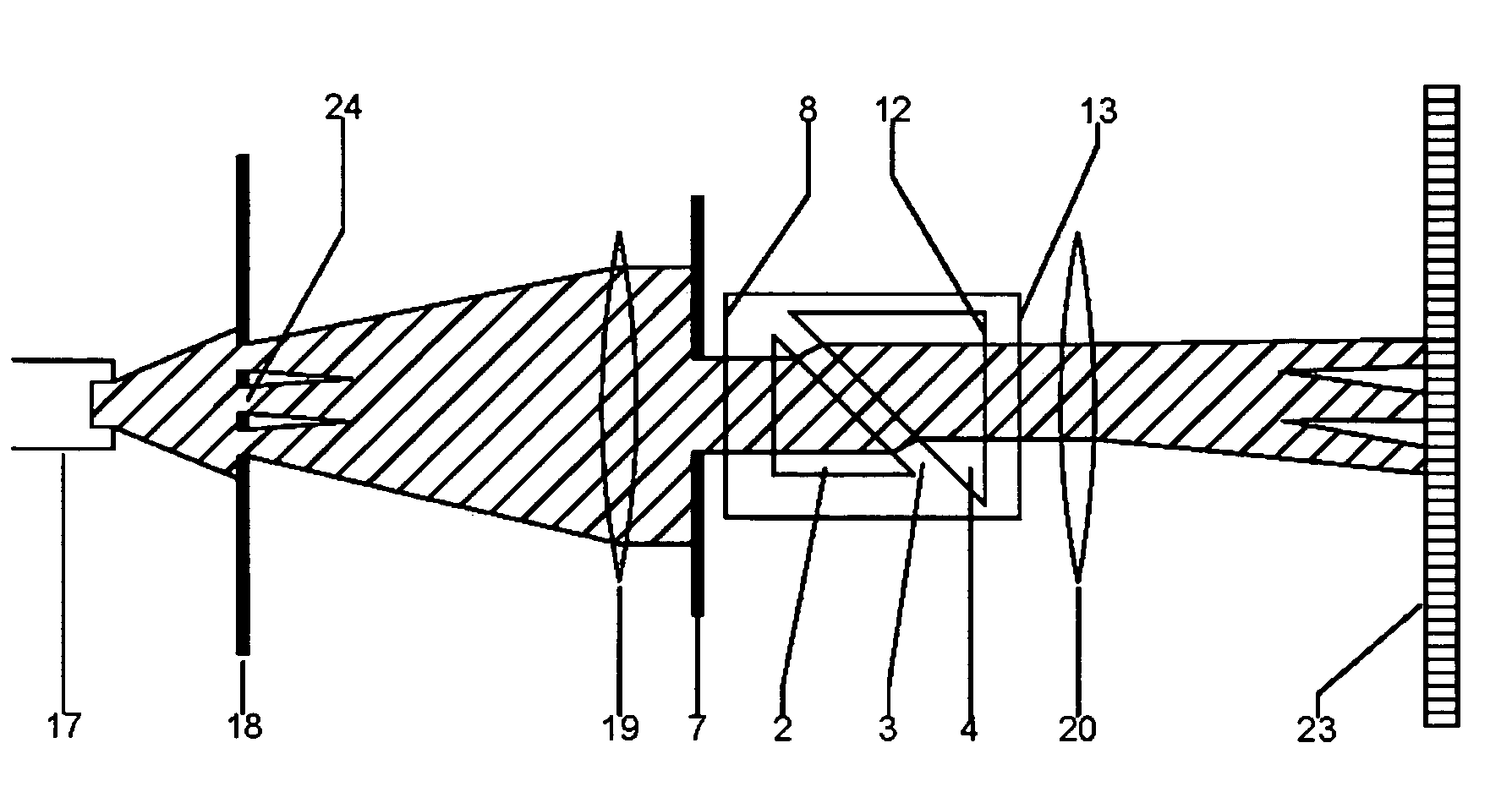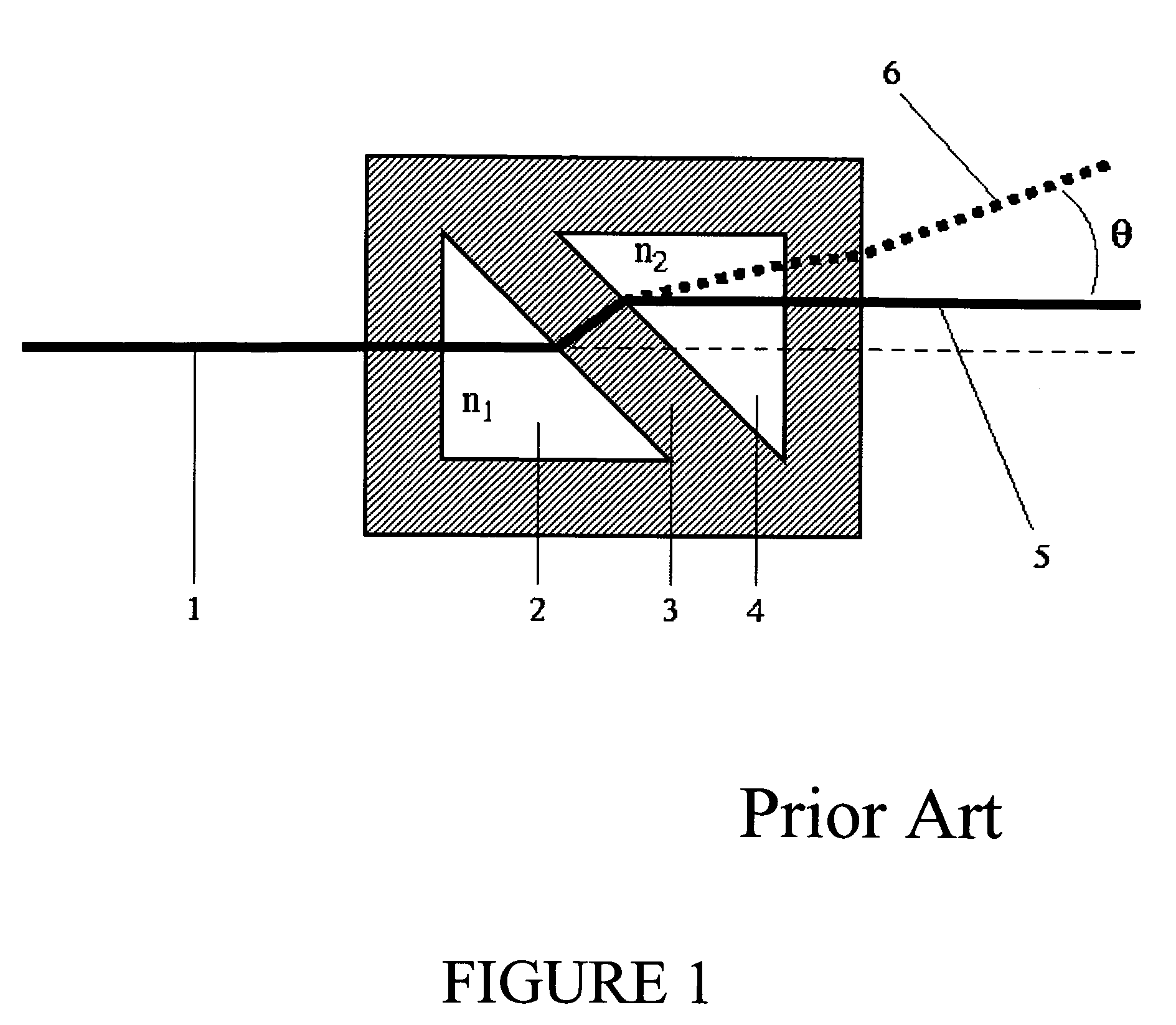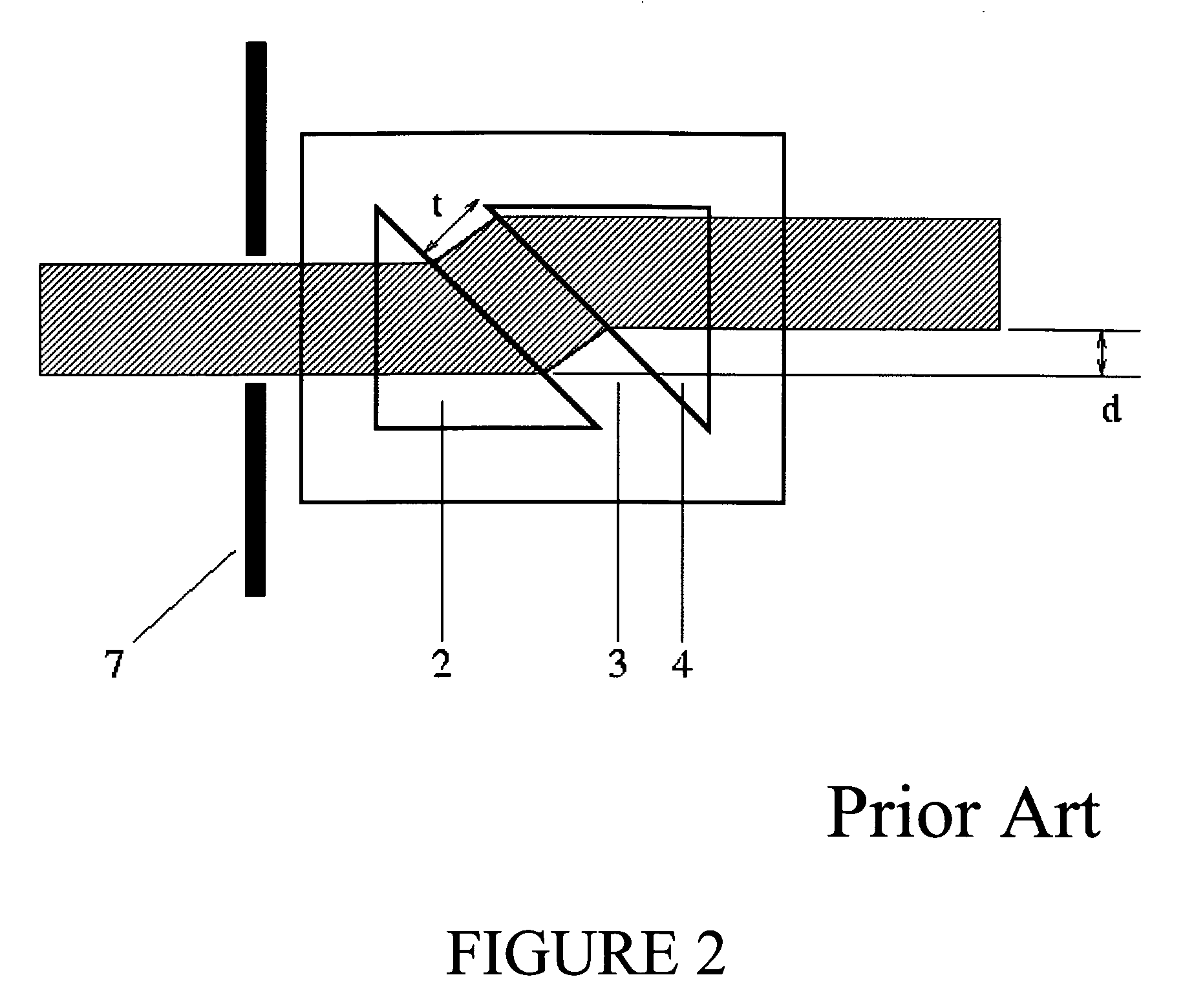Enhanced sensitivity differential refractometer incorporating a photodetector array
a technology of sensitivity differential refractometer and array, which is applied in the direction of phase-affecting property measurement, sampling, instruments, etc., can solve the problems of reducing the quality of data, data quality, and all subsequent measurements of fluids that are negatively impacted, so as to eliminate a significant moving part
- Summary
- Abstract
- Description
- Claims
- Application Information
AI Technical Summary
Benefits of technology
Problems solved by technology
Method used
Image
Examples
Embodiment Construction
[0041]The objective of all dRI detectors is to measure the refractive index difference between the reference and sample fluids. For a walk-off type dRI detector, this is accomplished by measuring the angular deflection of the light beam emerging from the cell after traversing it. The translation of the emerging beam relative to the incident beam contributes to limit the sensitivity of the conventional cell structure by reducing the region within the sample chamber which may be illuminated and still have that light reach and traverse the reference chamber. This translation has a major dependence upon the refractive index difference between the sample fluid refractive index and that of the transparent material of which the cell is fabricated, and a minor dependence on the refractive index difference between the sample and reference fluids. For most practical applications, especially those related to the field of liquid chromatography, the refractive index difference between the two fl...
PUM
| Property | Measurement | Unit |
|---|---|---|
| refractive index | aaaaa | aaaaa |
| transparent | aaaaa | aaaaa |
| diameter | aaaaa | aaaaa |
Abstract
Description
Claims
Application Information
 Login to View More
Login to View More - R&D
- Intellectual Property
- Life Sciences
- Materials
- Tech Scout
- Unparalleled Data Quality
- Higher Quality Content
- 60% Fewer Hallucinations
Browse by: Latest US Patents, China's latest patents, Technical Efficacy Thesaurus, Application Domain, Technology Topic, Popular Technical Reports.
© 2025 PatSnap. All rights reserved.Legal|Privacy policy|Modern Slavery Act Transparency Statement|Sitemap|About US| Contact US: help@patsnap.com



